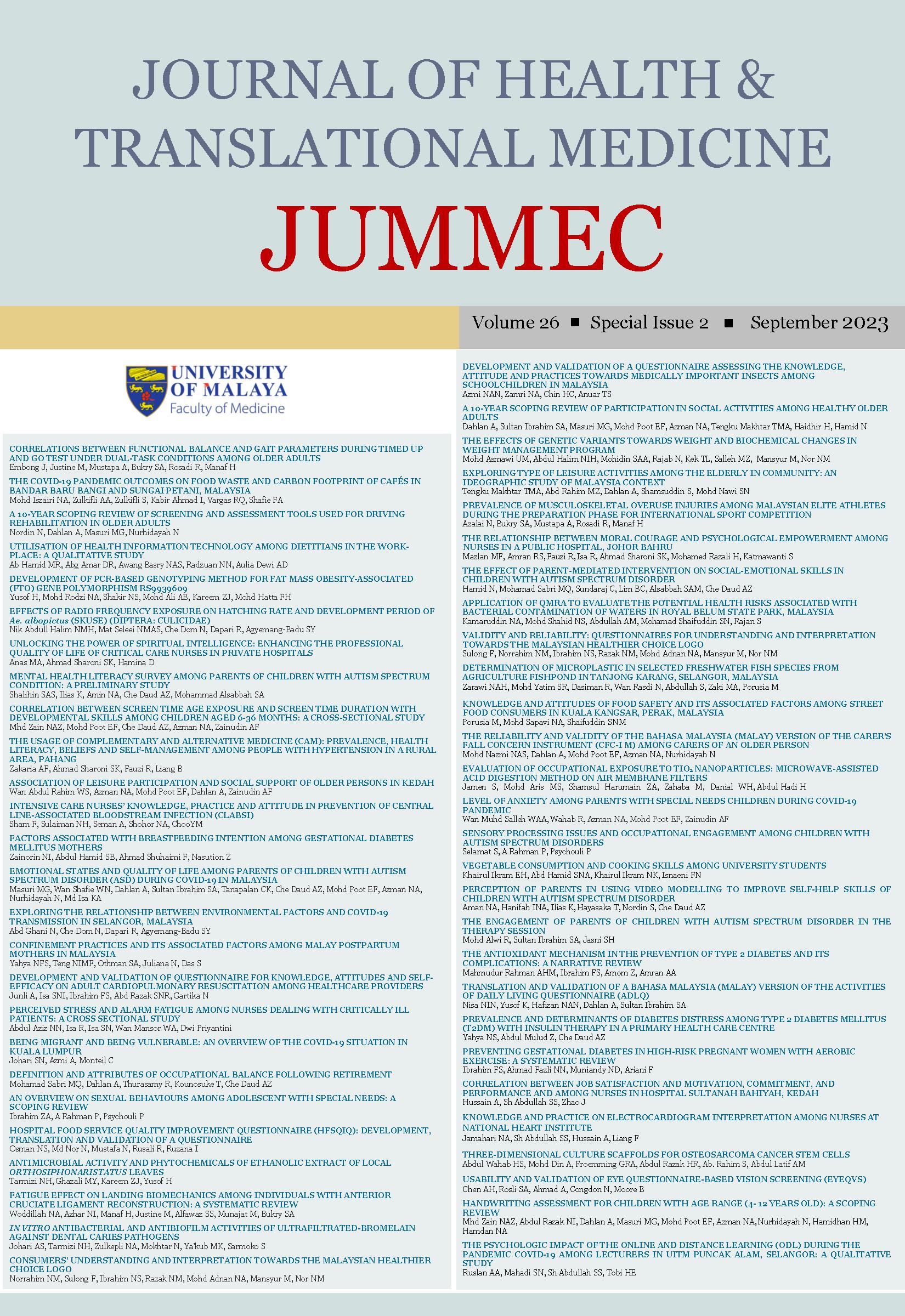DETERMINATION OF MICROPLASTIC IN SELECTED FRESHWATER FISH SPECIES FROM AGRICULTURE FISHPOND IN TANJONG KARANG, SELANGOR, MALAYSIA
Received 2023-07-12; Accepted 2023-09-14; Published 2023-09-15
DOI:
https://doi.org/10.22452/jummec.sp2023no2.36Abstract
As the amount of plastic in the environment continues to rise, one of the most significant environmental challenges that has emerged is the contamination of seafood with microplastics (MPs). This study was conducted in Tanjong Karang, Selangor, in order to investigate the prevalence of MPs, their properties, and the range of variation among them in different species of freshwater fish. Twelve different fish species from a variety of feeding zones were investigated to establish the degree to which MPs consumption rates differed from zone to zone. It was found that MPs were present in the gastrointestinal tracts (GIT) of 29.2% of the fish samples, which is a higher percentage than what has been found in other regions that have been documented. When compared to the other fish species, the Anabas testudineus has the greatest concentration of MPs. Examinations at a microscopic level indicated that the film morphotype and the colour white were predominant among MPs. Fourier Transform Infrared analysis showed that the fish gastrointestinal tract contained high-density polyethene and polypropylene as the predominant polymers. Plastic ingestion in fish may be related to the feeding zones, as indicated by the fact that demersal fish have a greater concentration of MPs compared to benthopelagic and pelagic fish. This finding will help people have a better understanding of which types of freshwater fish and which types of feeding zones contain greater levels of MP contamination.
Downloads
Downloads
Published
Issue
Section
License
All authors agree that the article, if editorially accepted for publication, shall be licensed under the Creative Commons Attribution License 4.0 to allow others to freely access, copy and use research provided the author is correctly attributed, unless otherwise stated. All articles are available online without charge or other barriers to access. However, anyone wishing to reproduce large quantities of an article (250+) should inform the publisher. Any opinion expressed in the articles are those of the authors and do not reflect that of the University of Malaya, 50603 Kuala Lumpur, Malaysia.


